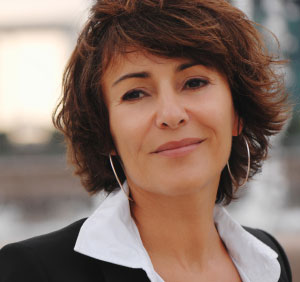Over time, our skin begins to deteriorate from many factors including sun damage and the loss of collagen. Too much sun exposure causes wrinkles and age spots, and the break down of collagen causes skin to sag. Many of the traditional treatments for facial imperfections, such as face-lifts and skin resurfacing, have long recovery periods and limited use. Sublative Rejuvenation using eMatrix provides a safer alternative to traditional facial rejuvenation procedures. Made by Syneron, the eMatrix RF with Sublative Rejuvenation is even available for many people whose skin type or skin color makes traditional resurfacing techniques impossible. Yes, the eMatrix is safe for ALL skin types.

Model Photo
Recently featured on the National TV, Sublative Rejuvenation uses special radio-frequency waves, called fractional bi-polar radio frequency waves, to transfer energy to the dermis layer immediately below the surface of the skin. The energy waves pass through the top layer without harming it, and heat the cells below the surface. This differs from other fractional resurfacing technologies which use light to bring about new skin growth. When these energy waves heat the layer of cells below the surface of the skin, the energy creates a wound-healing reaction that results in the production of collagen.
The eMatrix treatment leads to a reduction of wrinkles, scars, skin irregularities, lesions, and/or textural irregularities. Your skin may become more elastic, and your skin tone may begin to appear more even as new, healthy skin cells are produced. Also available now is the Syneron e2 which also offers more superficial treatments if needed.
Most patients report minimal pain associated with the treatment. A sunburned feeling, coupled with a warm prickly sensation, may accompany or follow the treatment and is usually calmed by a topical anesthetic or cooling cream. You will typically see results immediately after a treatment, and improvement may continue for up to one year following the initial treatment since the skin may continue to produce collagen long after the initial procedure is completed.
Most patients receive a series of three treatments, administered approximately four to six weeks apart, and some also have retreatment approximately one year after the initial rejuvenation to maintain and enhance the results.